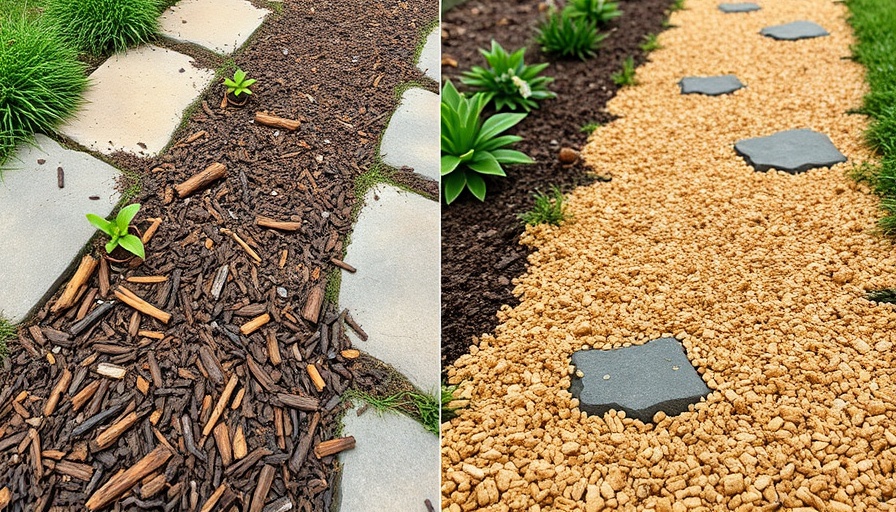
Understanding Mulch Glue: The Secret Sauce for Landscaping
If you find yourself frequently battling the elements to keep your landscaping pristine, mulch glue might be the solution you’ve been waiting for. Picture this: after a heavy rain, instead of staring at uprooted bits of mulch scattered across your yard, you can enjoy a cohesive and well-organized garden bed. This innovative product binds mulch, wood chips, and even decorative stones together, ensuring they remain where you intended them, rain or shine.
Why Mulch Glue is Essential for Beautiful Gardens
Mulch glue has slowly emerged as a landscaping must-have for homeowners and gardening enthusiasts alike. With changing weather patterns leading to more intense rainfall across the United States, traditional mulch can wash away or become unevenly distributed, affecting both the look and health of your gardens. Enter mulch glue!
As Andy Slamans from Petramax explains, “Mulch glue effectively keeps loose landscape materials in place, whether in garden beds, on slopes, or anywhere they tend to wander.” This is especially important for delicate flower beds or poolside gardens, where stray bits of mulch can tarnish an otherwise polished appearance.
The Chemistry Behind Mulch Glue
Most commercial mulch glues are primarily made up of urethane or acrylic binders, tailored to dry clear for a seamless look. Brion Amstutz of Nationwide Protective Coatings adds, “Different formulations offer varying levels of performance, with some using a combination of resin types for enhanced durability.” Interestingly, others, like Slamans' mulch glue, are biodegradable, reinforcing the trend of sustainability in home gardening products.
Application Tips for a Flawless Finish
To harness the full potential of mulch glue, proper application is crucial. The ideal strategy is to apply it onto dry mulch and during dry weather conditions, ideally waiting around 24-48 hours after application before any rain. Experts recommend using a pump sprayer for effortless and even coverage, applying multiple coats if necessary to ensure every piece of mulch is effectively bonded.
For those looking for a more budget-friendly alternative, making mulch glue at home from latex school glue and cornstarch is an option, although less effective than commercial solutions.
Pros and Cons of Using Mulch Glue
With every innovation comes advantages and potential drawbacks. The benefits of using mulch glue are clear: it decreases maintenance time, reduces the risk of erosion, and enhances the aesthetic appeal of your garden. However, a few considerations include the initial monetary investment and the need for periodic reapplication, particularly after heavy storms.
Inspiring Sustainable Gardening Practices
Adopting mulch glue in your gardening repertoire not only promotes a tidy landscape but also aligns with broader sustainability goals. As more people turn to eco-friendly and efficient solutions, mulch glue represents a shift toward incorporating science into everyday gardening. With the right products and techniques, you can transform your garden into a vibrant space that requires less upkeep and yields stunning results.
In conclusion, embracing mulch glue provides practical solutions for common landscaping challenges, helping you maintain beautiful green spaces. Whether you're new to gardening or an experienced green thumb, this innovative product can bring added creativity and resilience to your outdoor endeavors.
For more insights on sustainable gardening and lifestyle choices that elevate your well-being, stay tuned to our expert articles. It's time to take action and beautify your outdoors with mulch glue today!
 Add Row
Add Row  Add Element
Add Element 


 Add Row
Add Row  Add
Add 

Write A Comment